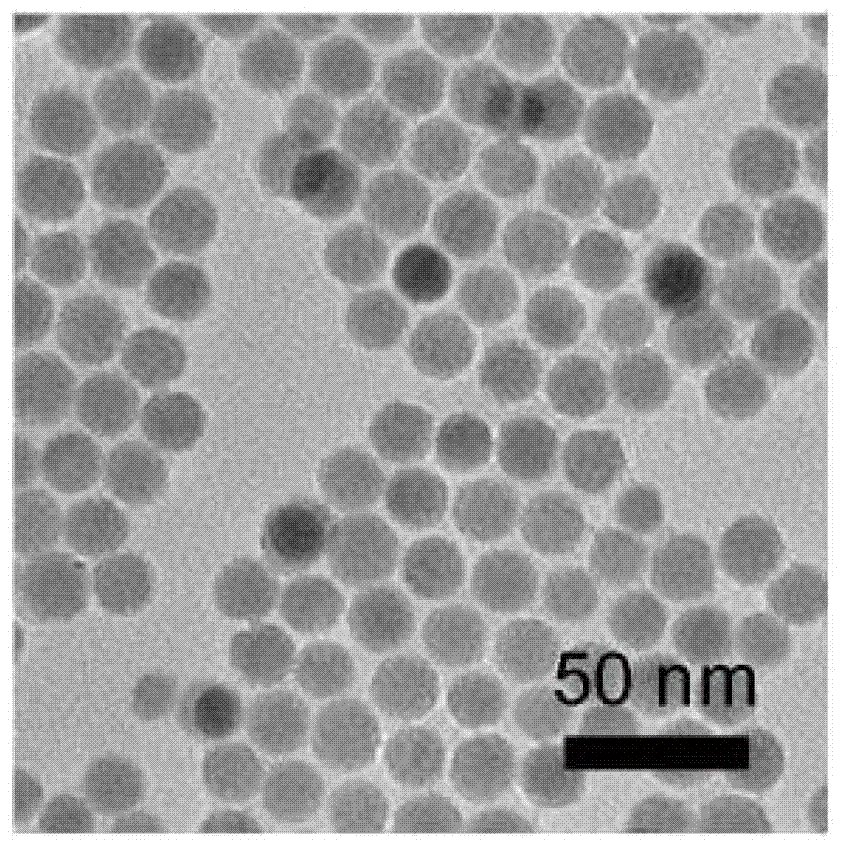Hg2+ sensor based on upconversion NaYF4 resonance energy transfer and detection method of Hg2+ sensor
A resonance energy transfer and sensor technology, used in material excitation analysis, fluorescence/phosphorescence, etc., can solve the problems of long time consumption, short fluorescence lifetime, poor stability, etc., and achieve the effect of low background interference, simple operation and high selectivity.
- Summary
- Abstract
- Description
- Claims
- Application Information
AI Technical Summary
Problems solved by technology
Method used
Image
Examples
Embodiment 1
[0031] a. Add 0.1 g of sodium lauryl sarcosinate to 7 mL of deionized water, and ultrasonically promote its complete dissolution;
[0032] b. Add 200 μL of block-polymer with a concentration of 1 mg / mL, 200 μL of rare earth up-conversion nanoparticles with a concentration of 0.5 mmol / mL, 200 μL of phospholipids with a concentration of 1 mg / mL, and Triton X-100 with a concentration of 10 mg / mL Take 20 μL of 200 μL of rhodamine thiolactone with a concentration of 5 mg / mL, mix evenly and add to the solution prepared in step a. The above five substances all use chloroform as the solvent;
[0033] c. Under the conditions of ice-water bath and stirring, use a crushing instrument to ultrasonicate for 5 minutes, and finally form an oil-in-water microemulsion system, and the ultrasonic power is 500W;
[0034] d. After standing still for 3 minutes, the microemulsion was subjected to suction filtration and rotary steaming for 20 minutes in a water bath at 60°C to remove chloroform in the s...
PUM
| Property | Measurement | Unit |
|---|---|---|
| diameter | aaaaa | aaaaa |
Abstract
Description
Claims
Application Information
 Login to View More
Login to View More - R&D
- Intellectual Property
- Life Sciences
- Materials
- Tech Scout
- Unparalleled Data Quality
- Higher Quality Content
- 60% Fewer Hallucinations
Browse by: Latest US Patents, China's latest patents, Technical Efficacy Thesaurus, Application Domain, Technology Topic, Popular Technical Reports.
© 2025 PatSnap. All rights reserved.Legal|Privacy policy|Modern Slavery Act Transparency Statement|Sitemap|About US| Contact US: help@patsnap.com



